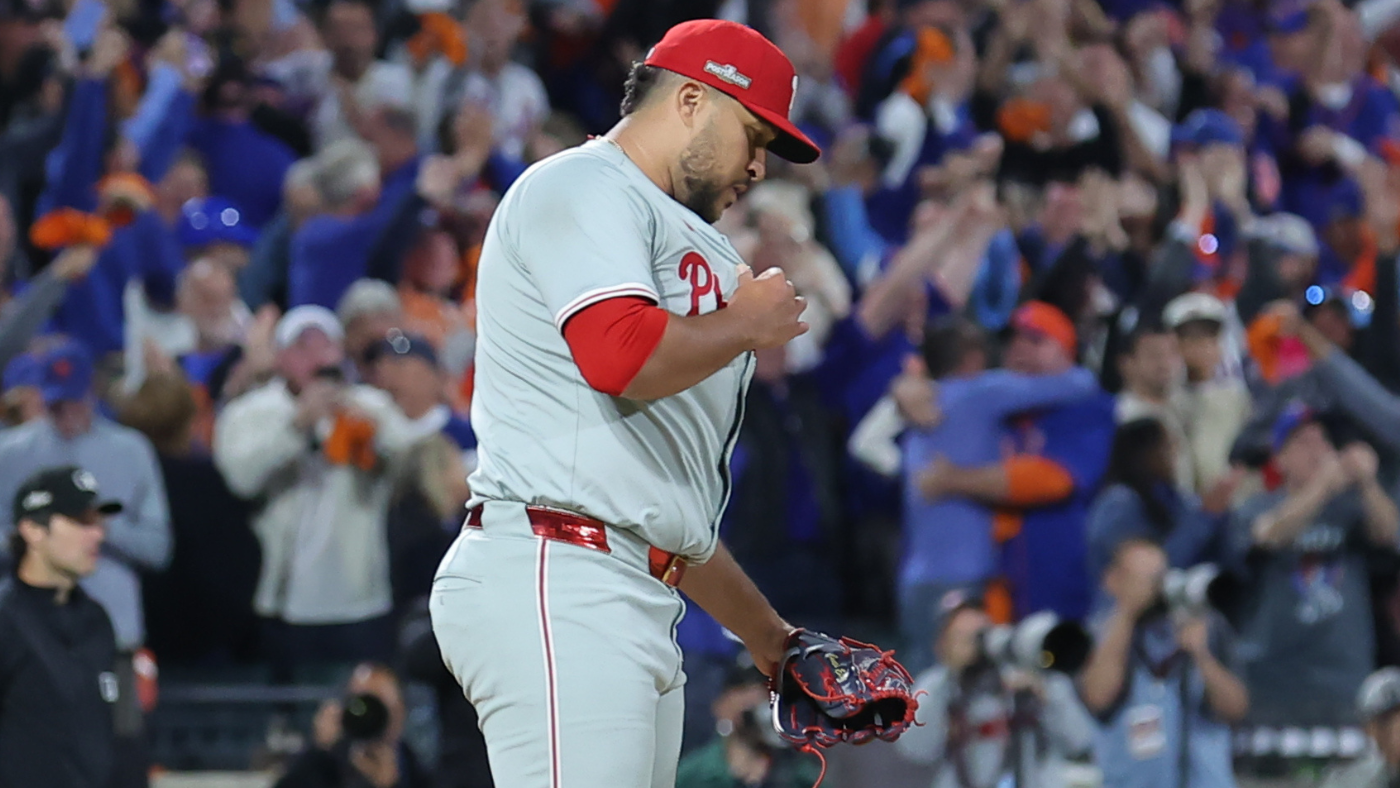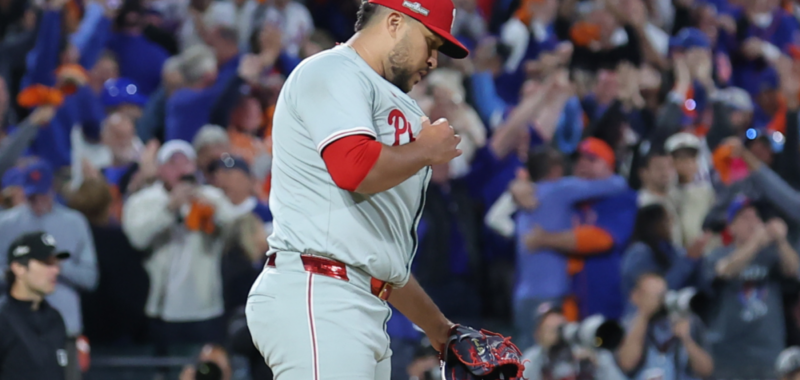
The Philadelphia Phillies saw their 2024 season end on Wednesday night with their 4-1 loss to the New York Mets. Coming off a 95-win regular season and their first National League East title since 2011, the goal was to win the World Series. Instead, they won only one postseason game before being eliminated by their loathed division rival.
As is the case with any playoff series defeat there are multiple culprits. The Phillies suffered from an inconsistent and at times undisciplined offensive attack (they combined to score five runs in their three losses), and that no doubt played a role. When settling on a leading villain, though, you’ll probably save your harshest appraisals for the Philly bullpen.
The Phillies’ relief corps was mostly a strength during the regular season. During that regular season, they ranked 14th in Major League Baseball in bullpen ERA, 10th in MLB in bullpen FIP, and sixth in FanGraphs’ version of bullpen WAR. As well, the front office bolstered the relief corps leading up to the deadline, chiefly with the addition of Carlos Estévez via trade with the Angels. They also added left-side depth by acquiring Tanner Banks from the White Sox. It was a solid unit by regular-season standards. In the playoffs, however, the Philly bullpen figured to be a pronounced strength given that the appearances would be concentrated among the team’s very best relievers.
That’s indeed what Rob Thomson did. Across the four games of the NLDS against the Mets, he called upon seven different relievers – Estévez, Orion Kerkering, Jeff Hoffman, José Alvarado, José Ruiz, Matt Strahm, and Banks. During the 2024 regular season that septet combined for an ERA of 2.78 with an FIP of 3.06. Philly relievers this season not among those seven names just listed, in contrast, teamed up for an ERA of 6.02 and an FIP of 5.25. That reinforces the point – the relievers deployed by Thomson against the Mets were elite during the regular season, in terms of both run-prevention and underlying fundamentals as measured by FIP.
All of that brings us to what happened against the Mets, and what happened was a sustained bullpen meltdown by the Phillies. Consider that against the Mets, Philly relievers – meaning the seven frontline relievers of note, a sound mix of righties and lefties – teamed up for an ERA of … 11.37. Yes, they hemorrhaged 16 earned runs (and one unearned) in 12 2/3 innings of work. By contrast, the Philly NLDS rotation allowed just six total runs in 21 1/3 combined innings. Back to the bullpen, in those 12 2/3 innings they issued seven walks and gave up four home runs. This wasn’t an isolated core-reactor meltdown skewing the numbers, either. In their “best” game of the series — the Game 3 loss — Philly relievers allowed three runs in three combined innings of work. In other words, nothing was working.
The overall struggles were crystallized in the sixth inning of what turned out to be the last game of the Phillies’ season. Thomson stuck with Jeff Hoffman to start the frame after he recorded the final two outs of the fifth inning. To start his second inning of work, Hoffman yielded a single to J.D. Martinez. Then he hit Starling Marte with a misfired slider. Then he walked Tyrone Taylor to load the bases. Finally, Hoffman earned a 6-2 putout, and finally Thomson came to get him.
The call went to Estévez, and, well, you probably already know what became of his 2-1 fastball to Francisco Lindor:
That was the swing that ended the Phillies’ season in all but the most technical of senses. That grand slam was built by one Philly reliever and then permitted by another. Across the sprawl of the entire season, it was another out-of-character moment for the bullpen. Across the much smaller slice of the NLDS, it might be termed “damnably predictable” by an invested observer.
This is the cruelty of the small sample size in baseball and, by extension, the cruelty of the postseason. Yes, a strong Mets offense had a little something to do with those unexpected outcomes, but where good hitting begins and bad pitching ends is sometimes difficult to discern. All we can say for sure is that the best of the Phillies’ relievers abandoned their tendencies at just the wrong time.

